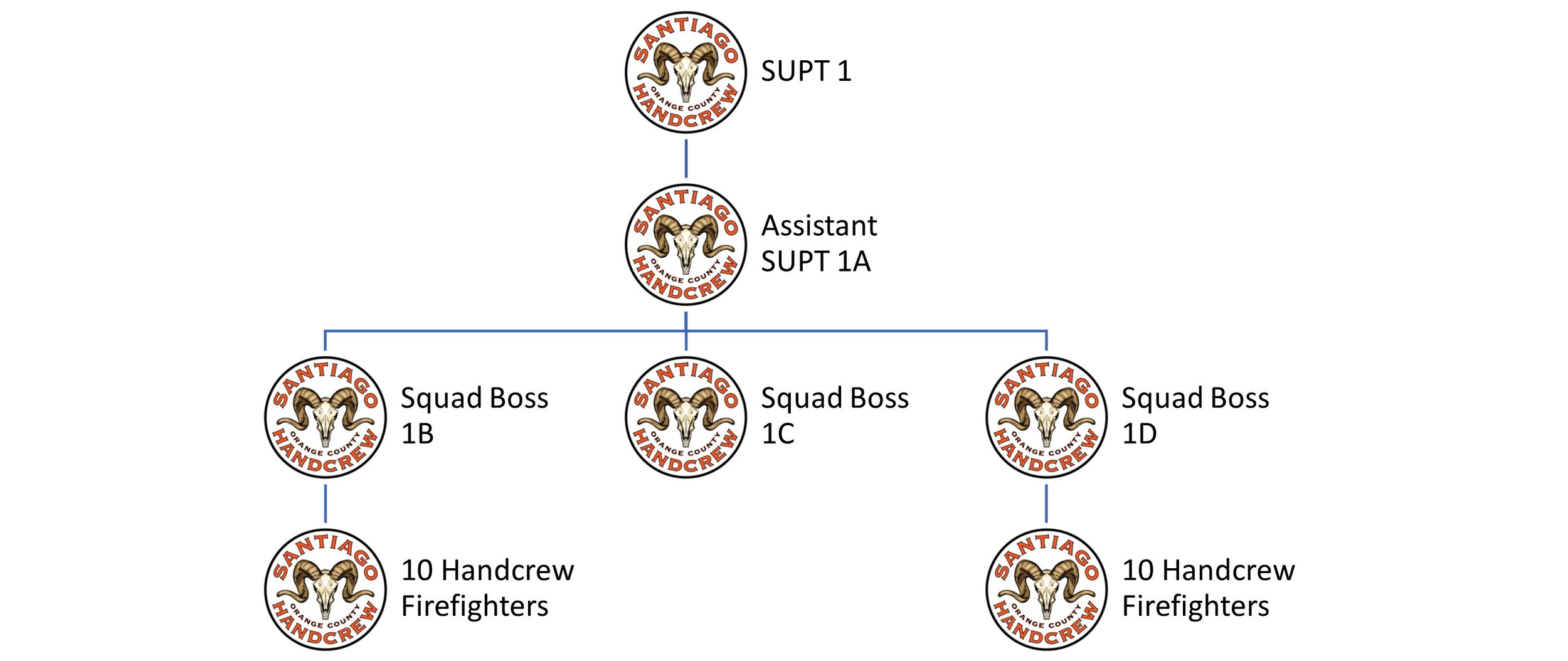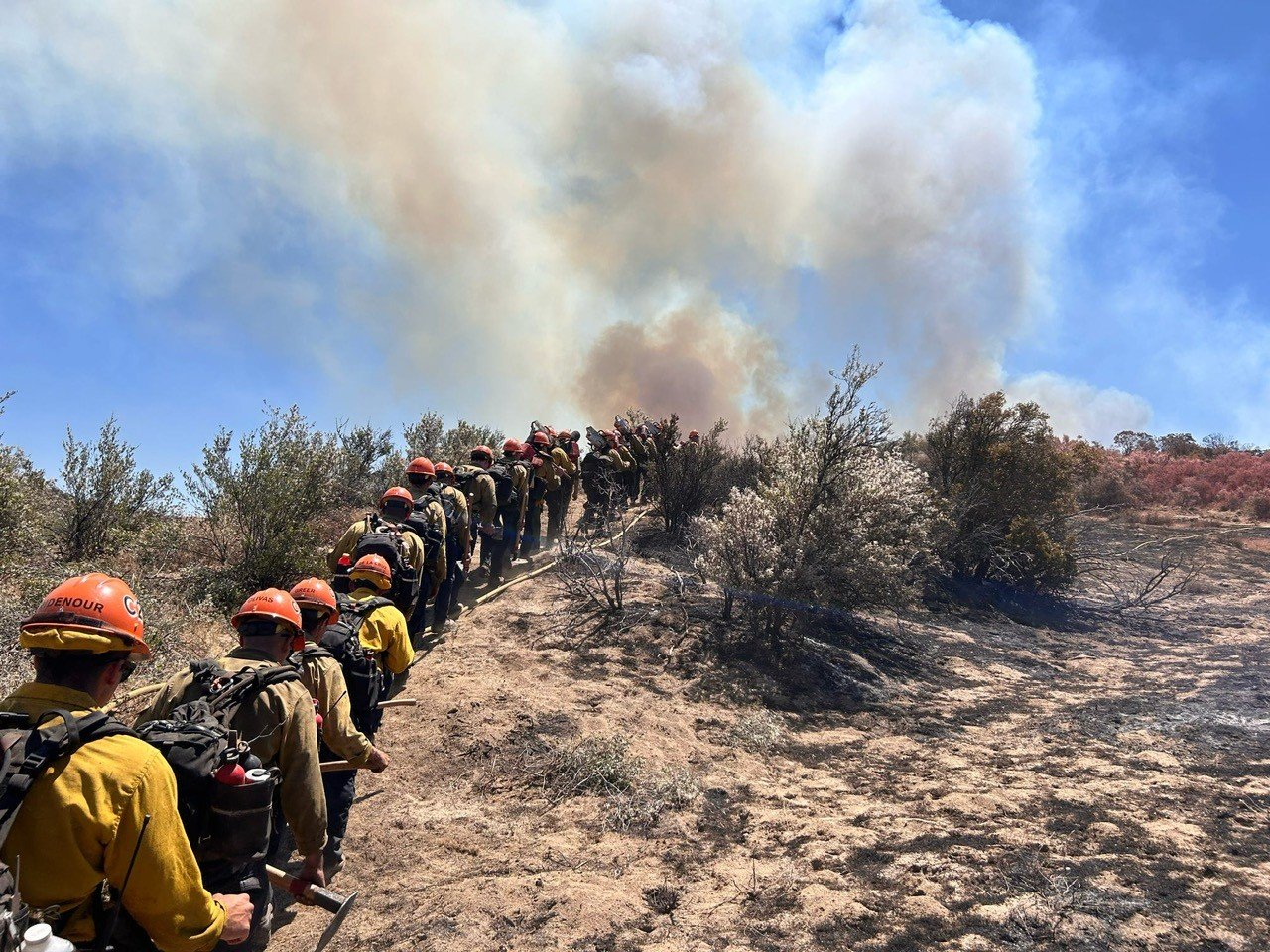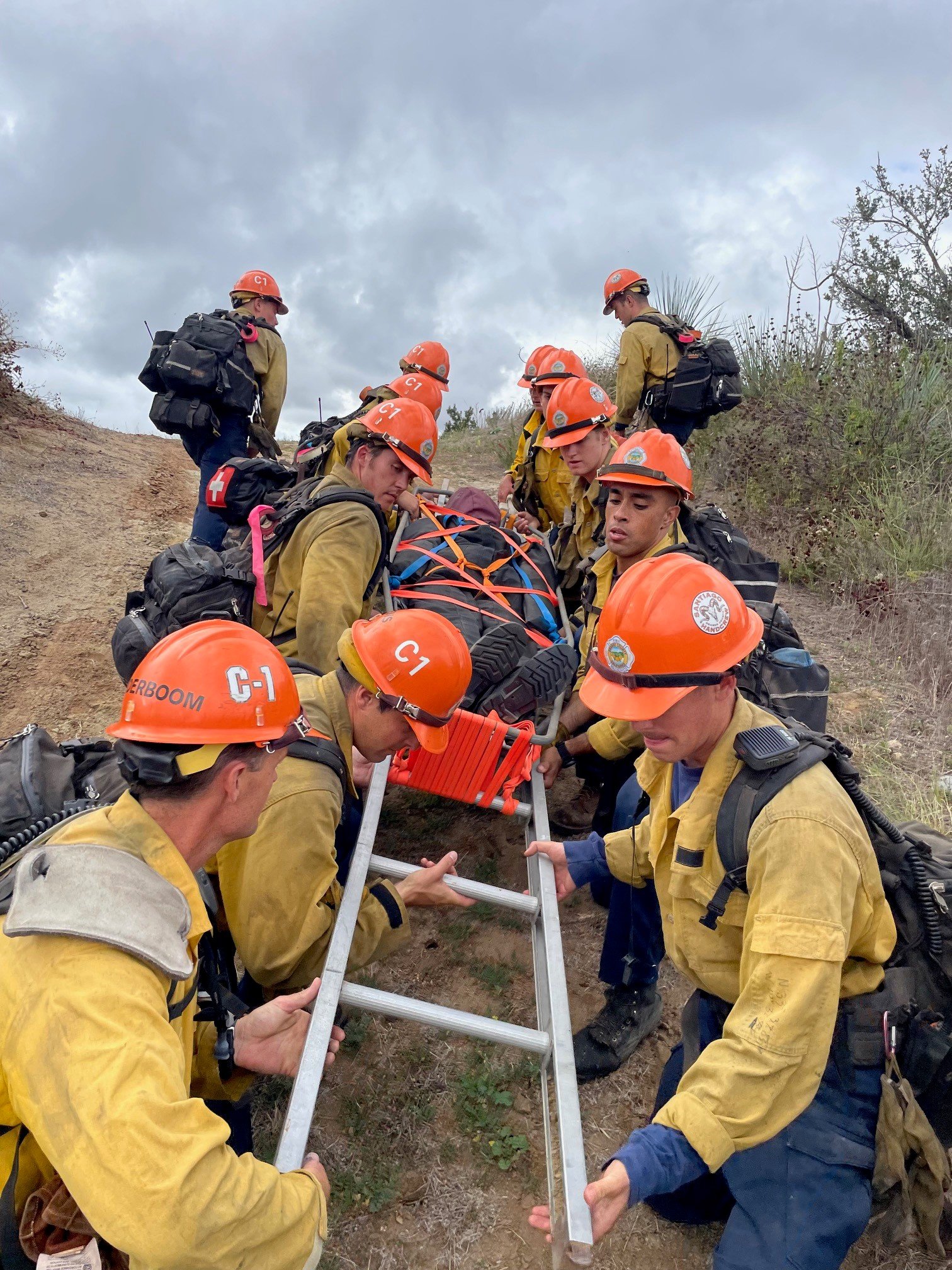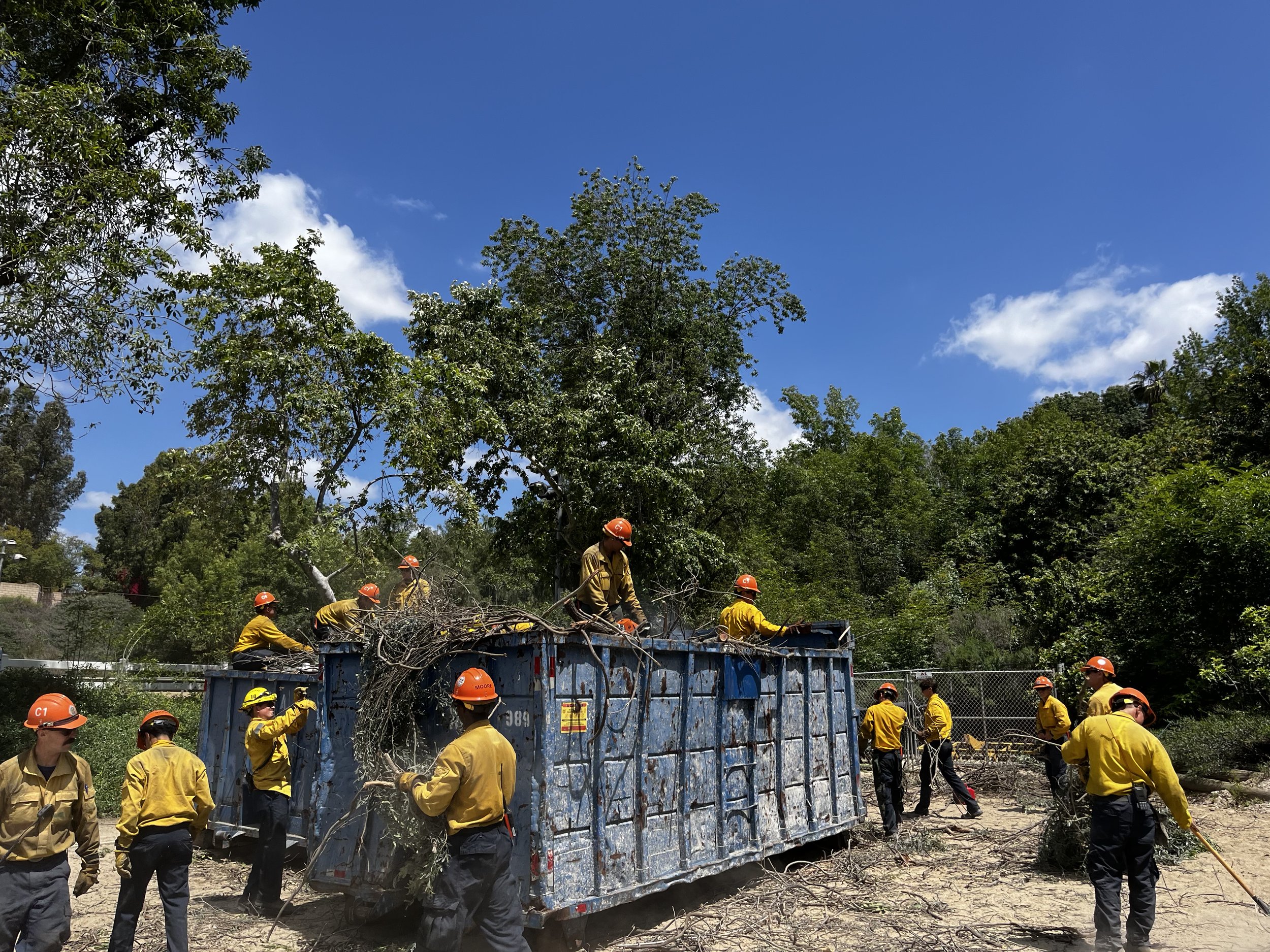Crew Organization
OCFA handcrews work for the Wildland Operations Battalion under the guidance of Assistant Chief of Field Operations South.
The OCFA operates two Type 1 Dividable Handcrews. The two crews (Crew 1 – Santiago Handcrew and Crew 2 – El Toro Handcrew) are staffed by 20 handcrew firefighters on each crew.
Each crew has its own overhead consisting of one Superintendent, two Assistant Superintendents, and two Squad Bosses, OR one Superintendent, one Assistant Superintendent, and three Squad Bosses. An additional two full-time HCFF’s are detailed to the OCFA’s two dozers as dozer swampers.
EL TORO
SANTIAGO
Job Duties
The primary function of OCFA’s crews are performing hazardous fuels reduction projects and wildland fire suppression. Other tasks include construction, fabrication, and clean-up activities as well as maintenance and repair of hand tools, power equipment, and vehicles. HCFF’s assist with department functions such as centralized wildland training and providing manpower for our training academies, Emergency Medical Services Section, and Urban Search and Rescue Program.
A typical workday includes station maintenance, vehicle and equipment checks, safety training, physical fitness training, and project work either in the field or at Camp.
To view the comprehensive classification specification for Hand Crew Firefighter, please visit www.ocfa.org.
SCHEDULE
OCFA handcrews work 10-hour days (0700-1700) on a modified 4/10 schedule. Crews may be called back during off-duty hours for in-county fires, out-of-county fires, and cover assignments. Crews commonly experience extended staffing hours for initial attack coverage and fire assignments during the fire season. Crews will frequently be called on for 24-hour coverage during high fire danger days and may be gone in excess of 14 days at a time on fire assignments in and out of county. If you cannot commit to being available for fires and cover assignments during the fire season, this job is not for you.
CAREER DEVELOPMENT
Career development is one of the primary goals of our crew program. We aim to build up crew members’ experience, education, and qualifications as wildland firefighters. Our more experienced and qualified firefighters are appointed to Senior Firefighter.
We emphasize training and experience to help our crew members pursue a career as a firefighter on the floor with the OCFA or other municipal fire agencies. Our HCFF’s are offered voluntary participation in the Firefighter Mentorship Program in which we assign crew members to be mentored one-on-one by the most progressive and high performing members of the agency. HCFF’s may participate in station visits and ride-along’s on the OCFA’s engine and truck companies to build experience in the all-risk side of the OCFA. This allows our crew members to immerse in fire house culture and be exposed to EMS and structural firefighting as well as learn the roles and responsibilities of a probationary firefighter on the floor.
Community Risk Reduction & Pre-Fire Management
OCFA handcrews conduct ongoing project work within the county in coordination with the OCFA Wildland Resource Planner and the Pre-Fire Management Section.
Project work is completed to reduce fire risk in interface areas, reduce invasive plant species, maintain fuel breaks, and maintain fire roads. Projects may be mutually beneficial to or contracted by cooperating agencies, landowners, and utility companies. These projects most often involve brushing, mowing, and chipping.
Firefighting Operations
OCFA handcrews maintain seven-day crew coverage for initial attack fires in OCFA’s jurisdiction. As a CalFIRE contract county, OCFA crews are available for response to fires within the state of California.
While assigned to fires, crews are expected to operate safely in adverse conditions including long hours, steep terrain, and extreme temperatures. Handcrews are self-sufficient by design, requiring little logistical support. HCFF duties on fires may include but are not limited to, direct and indirect line construction, falling operations, firing operations, mop-up, and fire suppression repair.














